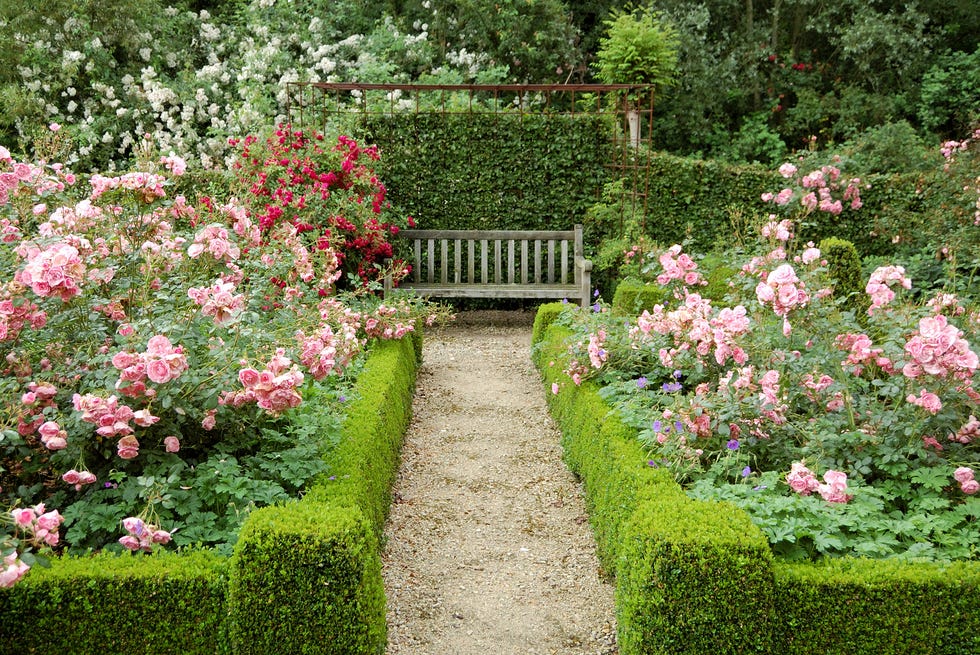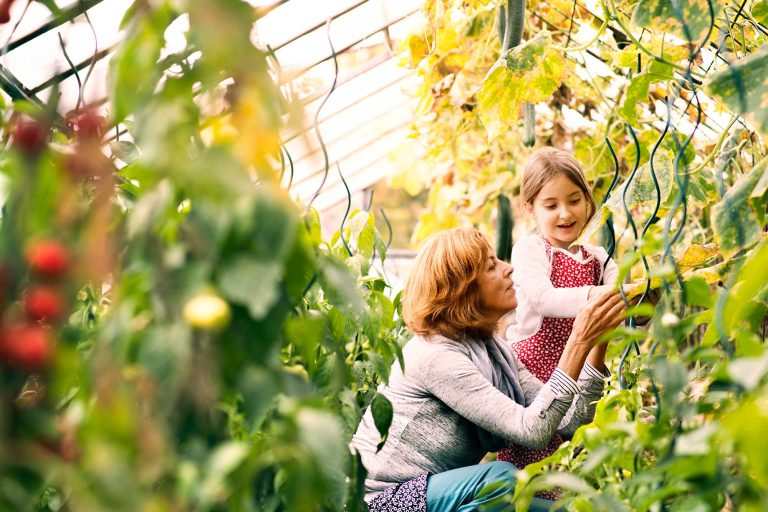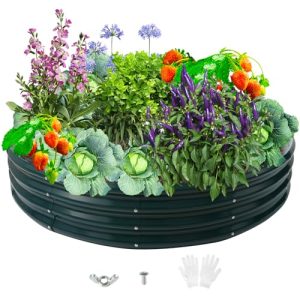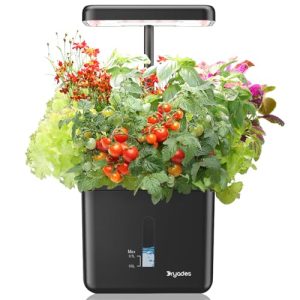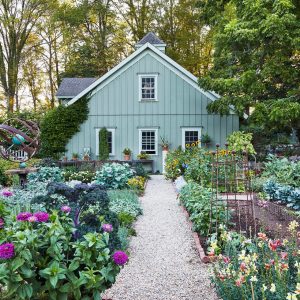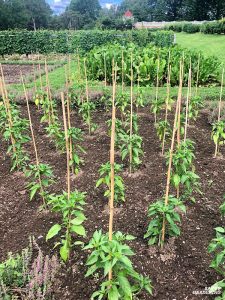Imagine stepping into your backyard and feeling as if you’ve been transported to the serene landscapes of the English countryside. The charm of an English garden, with its lush greenery, fragrant blooms, and meandering paths, can be yours to enjoy every day.
But how do you create such a timeless and tranquil space right at home? Designing an English garden may seem daunting, but with the right guidance, you can turn your outdoor space into a personal oasis. This guide will show you how to bring the classic beauty of an English garden to life, using simple steps and techniques that anyone can follow.
You’ll discover the secrets of garden design that will not only enhance your home’s appeal but also give you a sanctuary of peace and beauty. Ready to transform your garden into a stunning English haven? Read on to learn how you can make it happen.
Characteristics Of English Gardens
Creating an English garden involves lush greenery, winding paths, and vibrant flower beds. Incorporate charming elements like stone benches and water features. Use a mix of perennials, shrubs, and climbing roses to add color and texture.
Designing an English garden is like painting with nature’s palette. It’s about creating a serene space that echoes the charm and romance of the English countryside. The key to this timeless beauty lies in understanding its core characteristics.Natural Landscape
English gardens thrive on the concept of a natural landscape. Curved pathways and gentle slopes invite you to wander and explore. Native plants and wildflowers are encouraged to grow freely, giving the garden a spontaneous feel. Imagine walking through a garden where the boundaries between cultivated and wild blur. This is the essence of an English garden. It’s about embracing imperfection and allowing nature to take the lead.Formal And Informal Elements
An English garden masterfully balances formal and informal elements. You might find neatly trimmed hedges and well-defined flower beds alongside untamed meadows. This combination creates a delightful contrast that keeps the eye engaged. Try incorporating a structured rose garden or a clipped topiary against a backdrop of wild, colorful blooms. This blend of order and chaos can make your garden feel both elegant and inviting.Symmetry And Balance
Symmetry and balance are crucial in English garden design. While the garden may appear natural and free-flowing, its layout is often carefully planned. Symmetrical layouts, like mirrored paths or evenly spaced trees, add a sense of harmony. Think about how you can use symmetry to create focal points. Perhaps a central fountain or statue that draws the eye and serves as a gathering point. Balance is not just visual but also emotional, providing a sense of peace and tranquility. Do you find yourself drawn to the idea of an English garden’s natural charm? Consider how these characteristics can transform your outdoor space into a personal haven.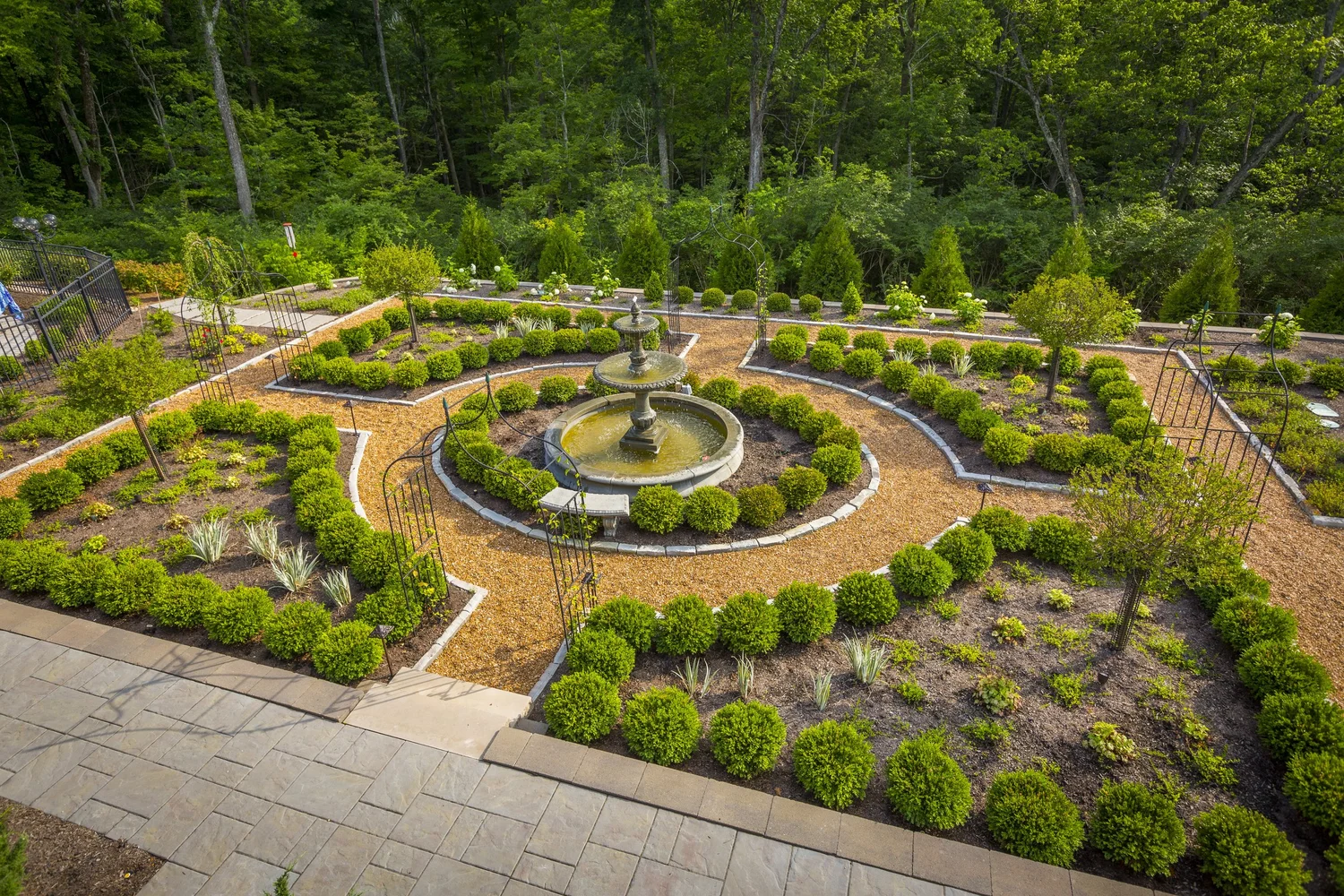
Credit: www.seilerslandscaping.com
Planning Your English Garden
Designing an English garden involves choosing traditional plants like roses and lavender. Create winding paths with stone or gravel. Incorporate classic elements such as benches, birdbaths, and hedges for a timeless look.
Planning your English garden can be an exciting journey into a world of beauty and tranquility. It’s a chance to create a space that brings you joy and peace. Whether you’re a gardening novice or a seasoned pro, understanding the essential elements of planning will set you on the right path. From choosing the best spot to considering the climate, every decision impacts the final look and feel of your garden. Let’s dive into the details to help you craft your perfect English oasis.Choosing The Right Location
Selecting the ideal location is your first step. Look for a spot that receives ample sunlight, as most English garden plants thrive in bright conditions. Observe your yard throughout the day to see how the sun moves. Access to water is also crucial. Ensure your garden is close to a water source, making it easy to maintain hydration during dry spells. Think about the view from your home as well. The garden should enhance your living space, offering a beautiful vista from your windows.Considering Climate And Soil
Your local climate and soil conditions will largely dictate your plant choices. It’s essential to match your plants with the environment to ensure they flourish. Test your soil to understand its composition—whether it’s clay, sandy, or loamy. Consider the temperature variations in your area. Some plants handle the cold better, while others thrive in warmth. Choose plants that fit your climate, and your garden will reward you with blooms and greenery.Designing For Scale And Proportion
Balance is key in garden design. Think about the scale of your garden relative to your home. Large trees in a small yard may overwhelm the space, while small shrubs might get lost in a vast landscape. Consider the height and spread of each plant. Arrange taller plants towards the back or center, with shorter ones in front. This layering creates depth and interest. Using personal experiences, remember when a too-large tree overshadowed my small garden, teaching me the importance of proportion. It’s these small details that make your garden feel just right. Planning your English garden is a rewarding task that invites creativity and attention to detail. As you choose locations, consider your climate, and design for scale, each decision shapes your garden’s unique character. What will your garden say about you?Selecting Plants And Flowers
Design an English garden by choosing classic plants like roses and lavender. Include seasonal blooms for vibrant color. Consider plant height and texture for a balanced look.
Selecting the right plants and flowers for your English garden is an exciting journey that combines creativity with nature’s beauty. Whether you are dreaming of vibrant blooms or a serene landscape, the choices you make will define the character of your garden. Dive into the world of plants and flowers, and let your garden flourish with elegance and charm.Perennials And Annuals
Choosing between perennials and annuals is like deciding the rhythm of your garden. Perennials offer a sense of permanence and return year after year with minimal effort. Think of hardy lavender or graceful peonies that withstand the test of time. Annuals, on the other hand, bring vibrant energy and newness each season. Imagine cheerful marigolds or bold poppies that add a splash of color to your garden canvas. Which will you choose to express your garden’s personality?Color Palette Choices
Color is the soul of your garden, so select hues that resonate with your vision. Do you prefer a calming palette with whites and blues, or does your heart sing with fiery reds and oranges? Consider how colors will interplay throughout your garden space. Will you create contrasting zones or opt for a harmonious blend? Think of your garden as a living painting where each color contributes to the masterpiece.Seasonal Blooms
The beauty of an English garden lies in its ever-changing seasons, and this is where seasonal blooms play their part. Spring might bring a flush of daffodils and tulips, while summer boasts roses and sunflowers in full glory. As autumn arrives, consider the quiet charm of asters and chrysanthemums. Winter can be magical too, with evergreen foliage providing structure and interest. How will you weave the seasons into your garden’s story? By carefully selecting plants and flowers, you can craft a garden that reflects your tastes and adapts with the seasons. What story will your garden tell?Incorporating Structures And Features
Create charm with classic elements like stone paths and decorative arches. Add benches and fountains for relaxation.
Designing an English garden is about creating a harmonious blend of natural beauty and artistic structures. Adding features like paths, focal points, and water elements can transform your garden into a tranquil retreat. These features not only enhance the aesthetic appeal but also provide functional benefits. Consider them as the framework of your garden’s design. Let’s delve into how each structure can be seamlessly integrated into your garden.Garden Paths And Walkways
Paths and walkways guide you through your garden, inviting exploration. Choose materials like gravel, brick, or stone for a classic English look. A winding path can create mystery, leading to hidden corners and surprises. Think about the width and layout; a narrow path can lend intimacy, while a broad walkway offers grandeur. Consider how the path interacts with your plants, creating a journey through different textures and colors.Focal Points And Statues
Focal points give your garden a center of interest. Statues, sundials, or even a unique plant can serve as your garden’s masterpiece. Position them to catch the eye as you enter a space, or use them to draw attention to a particular area. Consider the style of your focal points. A rustic statue can evoke a sense of history, while a modern piece might add contrast. These elements can reflect your personality, bringing a piece of yourself into the garden.Water Features And Ponds
Water features add tranquility and the soothing sound of flowing water. A small pond can become a habitat for wildlife, enhancing biodiversity. A fountain or birdbath can be the centerpiece of a seating area, offering a place for contemplation. Decide on the scale of your water feature based on your garden size. A large pond can dominate, while a small water feature might complement other structures. Consider maintenance, ensuring you have the time and resources to keep it pristine. How do these structures align with your vision for a peaceful retreat? Integrate these elements thoughtfully, and you’ll find yourself spending more time in your garden, enjoying its beauty and serenity.Creating Garden Rooms
Designing an English garden involves creating serene spaces with lush greenery and charming paths. Incorporate classic elements like hedges, flower beds, and stone features for a timeless look. Adding cozy seating areas enhances the inviting atmosphere.
Creating garden rooms can transform an ordinary yard into a charming retreat. Imagine stepping into a series of outdoor spaces, each with its own unique feel. These garden rooms offer variety and surprise around every corner. By using natural dividers and thoughtful design, you can create areas for relaxation, play, and quiet reflection. Let’s explore how to define these spaces through hedges, outdoor living areas, and secret hideaways.Hedges And Boundaries
Hedges are the backbone of any English garden. They provide structure and privacy. Planting dense hedges can create natural walls. Use evergreen varieties for year-round appeal. Consider yew, boxwood, or holly for classic looks. They frame each garden room and guide the eye. Hedges can also reduce noise and wind, making spaces more peaceful.Outdoor Living Spaces
Outdoor living areas extend your home into the garden. Think of patios, decks, and seating areas. Choose comfortable furniture that suits your style. Add cushions in weatherproof fabrics. Create cozy corners with outdoor rugs and lamps. Incorporate a fire pit or grill for warmth and dining. These spaces invite you to relax and entertain.Secret Gardens And Hideaways
Secret gardens add mystery and charm. Create hidden spaces with winding paths. Use trellises covered in climbing plants. Arbors and pergolas can lead to secluded nooks. Plant fragrant flowers like lavender and jasmine. Add a bench or hammock for resting. These spaces offer escape and solitude. They encourage exploration and imagination.
Credit: www.countryliving.com
Maintaining Your English Garden
Designing an English garden involves creating a serene, natural space. Use winding paths and vibrant flowerbeds to evoke tranquility. Add rustic benches and bird baths for classic charm, blending with lush greenery and colorful blooms.
Maintaining your English garden is an ongoing joy that ensures your landscape remains vibrant and flourishing. It’s not just about planting and walking away. Regular care and attention keep your garden looking its best throughout the year. Let’s dive into some key maintenance practices that will help you nurture your English garden with ease and confidence.Pruning Techniques
Pruning is essential to keep your plants healthy and encourage growth. Use sharp, clean tools to make precise cuts, removing dead or diseased branches. This allows light and air to reach all parts of the plant, promoting a lush and full appearance. Consider the specific needs of each plant in your garden. Some plants, like roses, thrive when pruned in early spring, while others prefer a summer trim. Getting to know your plants’ preferences can transform your garden into a stunning display of blooms.Seasonal Care
Each season brings its own set of tasks to keep your garden thriving. In spring, focus on planting and feeding your soil to prepare for the growing season. Summer requires regular watering and deadheading to maintain vibrant blooms. As autumn arrives, it’s time to clear fallen leaves and prepare your garden for winter. This might involve mulching to protect roots from frost. Winter is a quieter time but don’t forget to check for any damage after storms. Keeping a seasonal checklist can help you stay organized and proactive.Pest And Disease Management
Pests and diseases can quickly turn your garden dream into a nightmare. Monitor your plants regularly for any signs of trouble, such as discolored leaves or unusual spots. Early detection makes it easier to address issues before they escalate. Consider natural solutions like introducing beneficial insects or using organic sprays to keep pests at bay. Sometimes, a simple spray of soapy water can work wonders on aphids. What proactive steps can you take today to ensure a healthy garden tomorrow? Remember, maintaining an English garden is an ongoing journey filled with learning and satisfaction. Each task you perform contributes to a living masterpiece that evolves with the seasons. What new techniques will you try to elevate your garden’s beauty?Embracing The Timeless Aesthetic
Embracing the timeless aesthetic of an English garden invites you to connect with nature in a way that transcends generations. This classic style of gardening is not just about planting flowers; it’s about creating a harmonious space that speaks to your soul. As you design your garden, you’ll find yourself blending historical influences with modern adaptations, ultimately crafting a space that’s uniquely yours.
Historical Influences
English gardens are deeply rooted in history, drawing inspiration from the grand landscapes of the 18th century. Think of sprawling estates with elegant symmetry and romantic pathways. These gardens were designed to impress, showcasing a balance between manicured lawns and wildflower meadows.
Consider elements like stone pathways and wrought iron gates that echo the past. How can these historical touches fit into your modern landscape? Reflecting on these influences can guide your choices in plant selection and layout.
Modern Adaptations
Today’s English garden can embrace modern innovations while staying true to its classic roots. Imagine using sustainable practices like rainwater harvesting or planting native species for a low-maintenance garden. These modern touches can enhance the traditional charm and make your garden environmentally friendly.
Think about incorporating outdoor lighting or smart irrigation systems. How do these modern elements transform your garden’s functionality and appearance? They offer a fresh take on the timeless aesthetic, blending old-world charm with contemporary convenience.
Personalizing Your Space
Your garden is an extension of your personality, a place where you can express yourself. Whether you prefer a vibrant palette of colors or a serene monochrome look, your choices define the garden’s character.
Imagine adding a cozy seating area or a whimsical statue that brings joy to your heart. What personal touch can you add to make this space uniquely yours? Consider your favorite flowers or cherished memories that can inspire your garden’s design.
Ultimately, the beauty of an English garden lies in its ability to reflect who you are. How will you embrace this timeless aesthetic and make it your own?

Credit: www.countryliving.com
Frequently Asked Questions
What Is An English Garden Style?
An English garden style embraces natural landscapes with informal design. It features winding paths, lush greenery, and colorful flowers. It often includes traditional elements like hedges, topiaries, and water features. This style aims to create a harmonious and serene outdoor space that blends with its surroundings.
How Do You Plan An English Garden?
Start by assessing your space and climate. Choose native plants that thrive in your region. Create flowing paths with curves. Include diverse plant species for seasonal color. Add features like benches or fountains. Ensure the design complements your home’s architecture and offers a peaceful retreat.
What Plants Are Best For English Gardens?
Select plants that offer color, texture, and structure. Common choices include roses, lavender, foxgloves, and delphiniums. Incorporate shrubs like boxwood for hedges. Include perennials like peonies and daisies for continuous bloom. Choose plants that thrive in your local conditions for a successful garden.
How Do You Maintain An English Garden?
Regular maintenance involves pruning and deadheading to encourage growth. Keep paths clear and tidy. Water plants appropriately, considering seasonal changes. Mulch to retain moisture and suppress weeds. Fertilize as needed to support healthy blooms. Monitor for pests and diseases, addressing issues promptly.
Conclusion
Creating an English garden offers beauty and tranquility. Follow simple steps for success. Choose diverse plants to ensure year-round interest. Design paths and seating for relaxation. Consider color harmony for visual appeal. Use water features to add a calming effect.
Ensure good maintenance for a flourishing garden. Embrace creativity in your design choices. Enjoy the peaceful retreat you’ve created. English gardens provide a space to unwind. They bring nature’s charm to your doorstep. Start your garden journey today. Experience the joy of gardening.
Let your garden grow and thrive.
